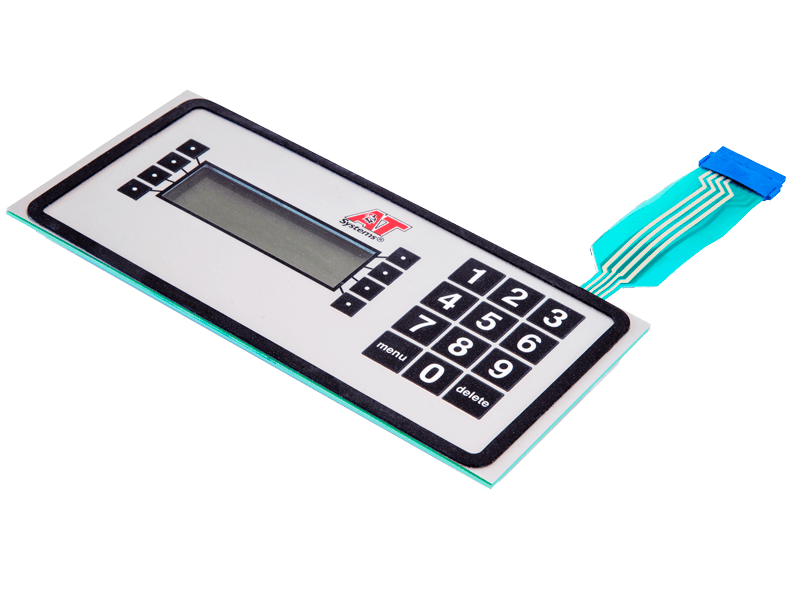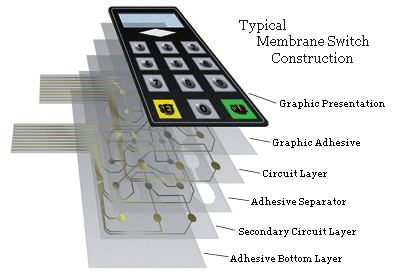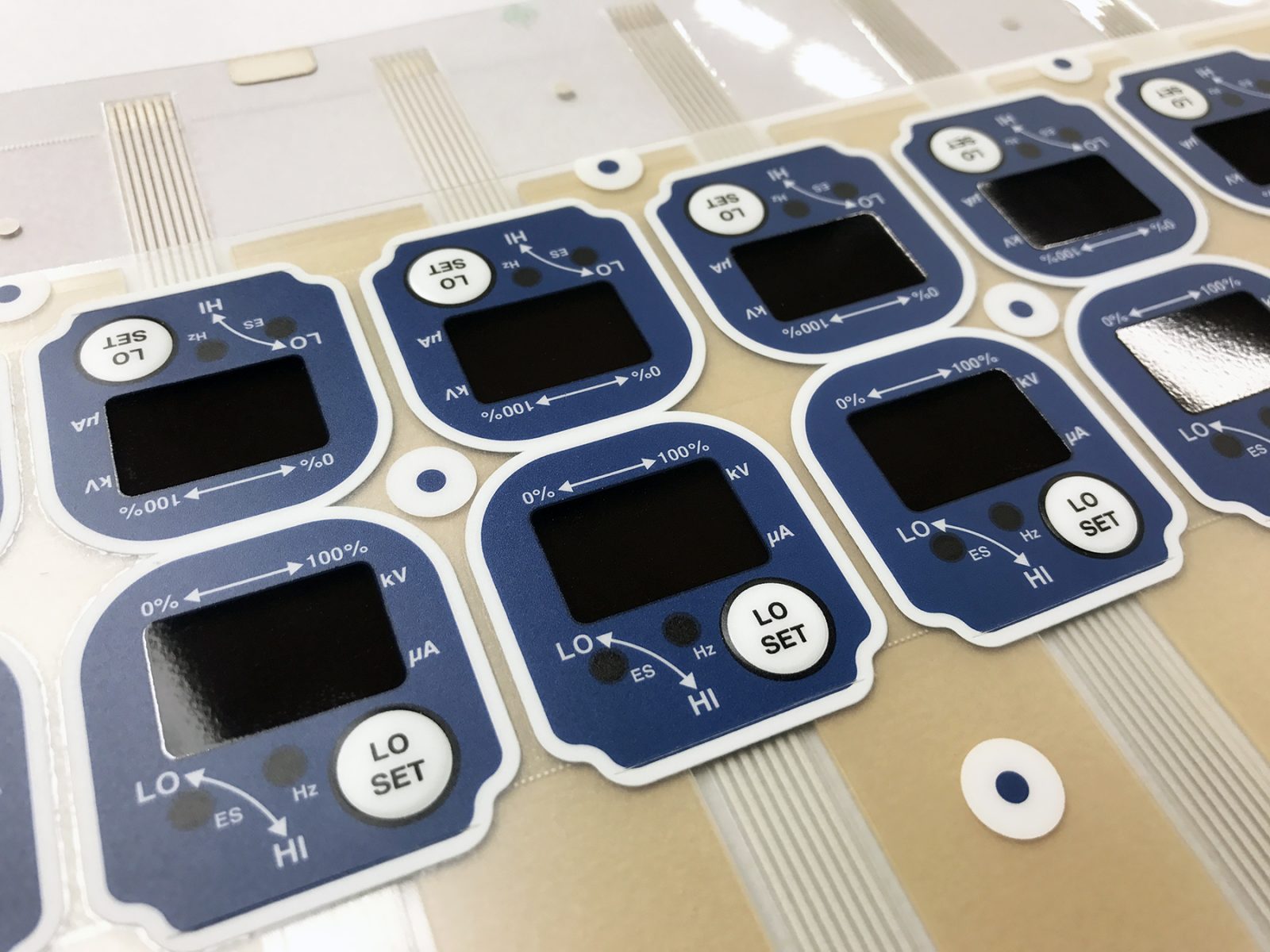Many industries depend on a skilled membrane switch manufacturer for custom solutions.
Many industries depend on a skilled membrane switch manufacturer for custom solutions.
Blog Article
Everything About Membrane Change: Recognizing Its Design and Capability
When you think of the control user interfaces in modern gadgets, membrane layer switches commonly enter your mind. These components are extra than just switches; they mix style and performance effortlessly. Comprehending exactly how they function and what makes them efficient can transform your point of view on daily electronic devices. There are nuances to their style and efficiency that you might not be aware of. Let's explore what sets membrane layer switches aside from other control systems.
What Are Membrane Switches?

Membrane buttons can likewise be personalized concerning form, size, and graphics, enabling producers to produce distinct user interfaces tailored to certain products. On the whole, membrane layer buttons play a substantial duty in boosting customer experience throughout a broad range of applications.
How Membrane Switches Over Job
When you press a secret on a membrane layer switch, it triggers an uncomplicated yet effective mechanism. The top layer, often constructed from versatile product, presses down onto a conductive layer under it. This activity bridges the gap between conductive traces, finishing an electrical circuit. As quickly as the circuit shuts, it sends a signal to the device's controller, which analyzes your input.
You'll see that the responsive responses varies based upon the switch layout, using either a soft click or a much more pronounced response. As soon as you launch the key, the membrane returns to its original setting, reopening the circuit and quiting the signal. This procedure happens virtually instantaneously, guaranteeing a receptive individual experience.
Membrane layer switches are prominent because of their longevity and resistance to dirt and dampness, making them ideal for different applications, from family home appliances to clinical devices. Comprehending this procedure helps you value their prevalent usage.
Trick Components of Membrane Layer Buttons
Understanding the key parts of membrane layer buttons is essential for comprehending their capability and design. The protective layer shields versus environmental factors and wear, prolonging the button's life-span. By comprehending these components, you'll get understanding into exactly how membrane switches over operate and their value in various applications.
Materials Utilized in Membrane Switch Style
The performance and resilience of membrane layer switches over greatly depend on the materials used in their design. You normally run into polyester and polycarbonate as primary substratums because of their outstanding toughness and adaptability. These products resist scratches and chemicals, making them ideal for demanding settings.
The conductive layers typically make use of silver or carbon, selected for their reliability and conductivity. membrane switch manufacturer. Silver supplies superior efficiency, while carbon is an economical alternative. For the overlay, you could consider a matte or shiny coating, depending on your aesthetic requirements and customer experience
Adhesives play a vital function as well; they bond layers firmly and assure long life. Ensure to pick adhesives that stand up to ecological factors like temperature and humidity. Don't forget the significance of a great printing technique for graphics, as it improves both functionality and visual appeal. Choosing the best products will certainly assure your membrane layer switch stands the test of time.
Design Factors To Consider for Membrane Layer Buttons
While creating membrane switches, it's vital to take into consideration different elements that affect their functionality and user experience. Beginning by concentrating on the layout and switch size; ensure they're user-friendly and easy to browse. Think about the responsive comments you desire to provide-- will customers need a visible click or a softer touch? In addition, consider the products you'll make use of, as they'll influence toughness and appearances.
Do not neglect the graphic layout; clear labeling and color comparison are significant for visibility. Validate your design suits ecological aspects, like moisture or temperature variations, which might influence performance. Remember the importance of testing prototypes with real users to gather feedback and make needed changes. This repetitive procedure aids you refine the style, validating it meets both practical and aesthetic requirements successfully. By meticulously thinking about these aspects, you'll develop a membrane layer button that enhances usability and complete satisfaction.
Applications of Membrane Layer Buttons
Membrane buttons are flexible elements found in numerous applications, from industrial tools to customer electronic devices. You'll see their effect in machines that require sturdy interfaces and in gadgets that take advantage of smooth designs. Understanding these applications helps you my link appreciate the functionality and usefulness of membrane buttons in daily technology.
Industrial Equipment Usage
When you're looking to boost the capability of industrial devices, membrane layer switches use a reputable service that combines sturdiness with easy to use design. These buttons are ideal for rough settings, providing resistance to dust, moisture, and chemicals. Embrace membrane layer switches to improve your procedures and improve general efficiency.
Consumer Electronics Combination
In the domain name of customer electronics, membrane buttons play a vital function in improving customer interaction and gadget performance. Membrane switches likewise ensure durability and resistance to dust and dampness, expanding the life-span of your electronics. By picking membrane switches, you enhance not simply the performance but likewise the style of your tools, making day-to-day communications smooth and pleasurable.
Benefits and Downsides of Membrane Buttons
While membrane layer buttons provide a range of advantages, they likewise come with some downsides that you must consider. One considerable advantage is their compact layout, making them excellent for space-constrained applications. They're additionally cost-effective, offering a sturdy option with a reduced manufacturing expense. In enhancement, their seamless surface is simple to tidy, boosting health in atmospheres like health centers.

Nonetheless, there are drawbacks. Membrane switches can have a shorter life-span compared to mechanical switches, particularly under hefty use. They can likewise be much less responsive, which could affect user responses throughout operation. If harmed, fixing them can be challenging and often needs total replacement. Ultimately, their level of sensitivity to severe temperatures and ecological conditions may restrict their performance in specific settings. Balancing these benefits and drawbacks will certainly aid you establish if membrane web link switches are the appropriate fit for your job.
Frequently Asked Inquiries
How Much Time Do Membrane Layer Switches Normally Last?
Membrane layer changes usually last in between 5 to ten years, depending on use and environmental problems. You'll wish to evaluate variables like wear, exposure to moisture, and temperature level variations to determine their longevity effectively.
Can Membrane Switches Over Be Custom-made for Details Styles?
Yes, you can tailor membrane switches to fit particular designs (membrane switch manufacturer). You'll have the flexibility to choose colors, shapes, and formats that match your task's needs, guaranteeing they mix flawlessly with your overall aesthetic
What Is the Price Range for Membrane Switch Over Manufacturing?
The expense variety for membrane layer button manufacturing usually drops in between $1 and $10 each, relying on elements like layout complexity, amount, and materials. You can get quotes from makers to locate the finest option.

Are Membrane Layer Switches Over Water-proof or Resistant?
Membrane switches can be made to be water resistant or immune, relying on products made use of and building and construction techniques. If you need them for wet atmospheres, assure you specify those requirements throughout the design process.
Just How Do Membrane Changes Compare to Standard Switches?
Membrane buttons are typically thinner and a lot more adaptable than conventional buttons, offering a streamlined style. They're often simpler to cleanse and integrate, yet could not provide the responsive responses you're made use pop over here of to with mechanical options.
Conclusion

Report this page